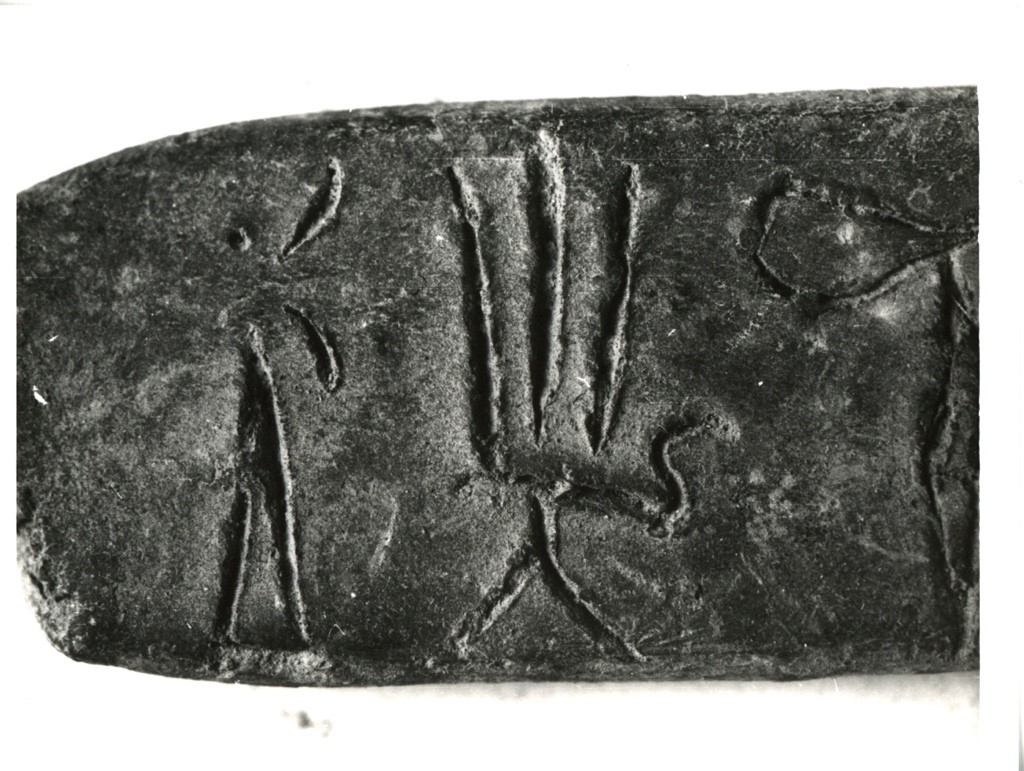By Jared Petroll
Working with Dr. Palaima through my apprenticeship introduced me to parts of the research process that I had previously not been exposed to. Above all, I realized the collaborative nature of scholarship. In history, the genius of an academic discovery is often attributed to a single person, with the implication that they possessed a sort of superhuman intelligence that distinguished them from others. I now understand that this is far from the truth. Discovery is preceded by hours and hours of careful data collection, consultation, and collaboration with other experts in the field. Moreover, the great foundational scholars of a field are often in communication with each other rather than apart. This is important. It means that one does not have to publish transformative work to do good work and contribute to the knowledge base in any field.
Mycenaean Seals on Arachne
Some of my work entailed looking through Arachne, an online database of seals, seal impressions, and signet rings of the Aegean area in the second millennium BCE that Dr. Palaima introduced me to. Arachne is affiliated with the University of Cologne in Germany. I also used the Corpus der Minoischen und Mykenischen Siegel (CMS), which provides more specific descriptions of the seals. While translating German was difficult, I enjoyed it, realizing how much I was limiting myself by reading things exclusively in my native language. For someone who has never left the U.S., the activity broadened my perspective and reminded me of how the scholarship is a global phenomenon.
Navigating Arachne led me to a particular iconograph, the seated lady, and its presence across multiple art forms. Thought to be a goddess or female of distinguished status within the main cultures of the Aegean area roughly 1850-1000 BCE, the seated lady appears on mirrors, signet rings, wall paintings, and other mediums. Whether these individual images refer to the same person is an open question that still intrigues me now. The iconograph appears in images that possess other clues that refer to their religious significance. These include tripartite shrines, horns of consecration, and sacred birds. I became interested in how these symbols came together and interacted to convey a greater meaning to the viewer because it shows how imagery was used to convey ideas, much like today.
Archiving the Emmett L. Bennett Jr. Collection
One of my favorite experiences was working with PASP’s Emmett Bennett Collection. In order to understand the importance of archival research in scholarship, I was tasked with cataloging detail photos of Linear B signs from the Knossos Tablets. This process included:
- Assigning each photo an individual catalog number
- Entering the appropriate tablet IDs, photograph reel and shot numbers, and descriptive data into a spreadsheet
- Properly handle and store them in mylar sheets and archival containers
With the PASP archivist, I also devised cataloging guidelines for this work to continue in the future. While approximately 200 photographs were archived so far, many more remain.
In this leg of my research, the role that archivists play in organizing, itemizing, and describing primary documents became apparent. Absolutely focused attention to detail was required. Taking notes as I progressed was essential. I also learned how archivists had to interpret as well as document the material they worked with in order to examine and explain its relevance to modern scholarship. While the work was meticulous, I became extremely interested in the photos. Since the images were from the mid 1950s the script was only recently deciphered when they were taken. I began to ponder why some signs were subject to more scrutiny than others, whether the images were used in later publications, and if there were any other items in the Bennett Materials that would provide answers to these questions.

Bennett Correspondence Project
When UT shifted to remote learning in March in response to COVID-19, I began compiling a master list of PASP’s correspondence collections, starting with the Emmett Bennett Correspondence Collection. Bennett developed the system for organizing Linear B signs that is still used today, and it was essential for deciphering the script. His letters to Alice Kober, Michael Ventris, and John Chadwick, demonstrate what brilliant minds each were in their own right. Reading their interactions with each other, paired with examining the Bennett’s photos of the Knossos tablets, felt like witnessing the field of Linear B studies come into being firsthand. And again, themes of international collaboration and mutual respect among scholars were stressed.
All in all, the apprenticeship was an experience that helped me grow intellectually and personally, and I am thankful for the opportunities and insights it provided. I got to see the small village of people it took to research a single topic: archivists, professors, graduate students, and specialists across the world interacting with each other to produce something beneficial to society. I am excited about where my interests in the Aegean Bronze Age might lead next, and for who I will get to work with along the way.
Updated on May 26, 2020 by Garrett R. Bruner. garrettbruner@utexas.edu
